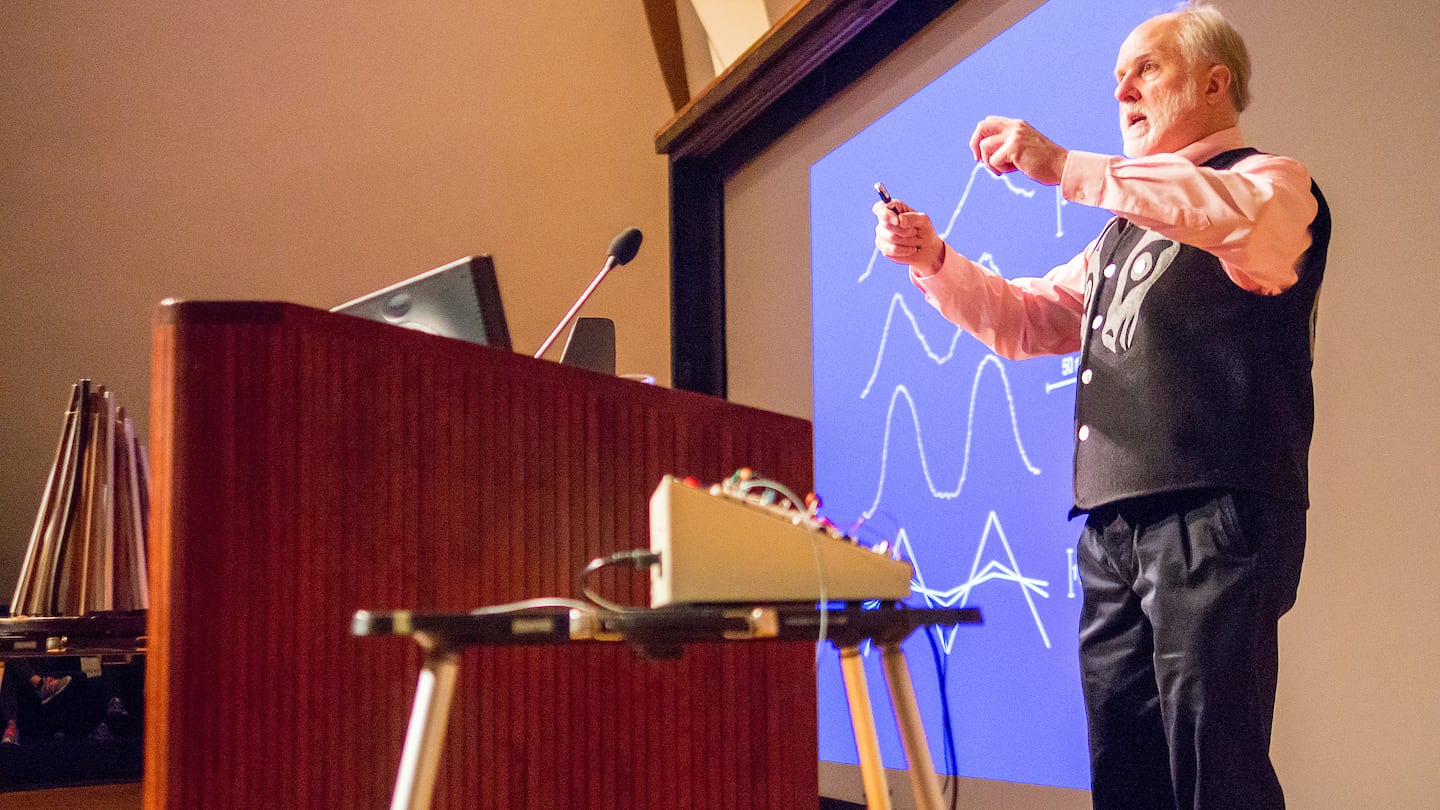The intricate process of hearing—how our ears transform invisible sound waves into the rich tapestry of music, speech, and environmental sounds we experience daily—remained one of biology’s most perplexing mysteries for centuries. When Dr. A. James Hudspeth passed away on August 16 at age 79, the scientific community lost a visionary who fundamentally changed our understanding of this remarkable sensory process.
A Scientific Pioneer’s Journey
Dr. Hudspeth’s groundbreaking work at Rockefeller University in New York City didn’t just advance academic knowledge—it opened new frontiers in treating hearing loss, developing cochlear implants, and understanding age-related hearing decline. His research into the microscopic world of the inner ear revealed the elegant biological machinery that allows us to distinguish between a gentle whisper and a thunderous symphony.
When Hudspeth began his research in the 1970s, scientists understood that hair cells in the cochlea played a crucial role in hearing, but the exact mechanisms remained frustratingly elusive. These tiny receptor cells, named for their hair-like projections called stereocilia, were known to be involved in converting sound waves into electrical signals, but how they accomplished this feat was unclear.
Unraveling the Mysteries of Mechanotransduction
Dr. Hudspeth’s most significant contribution was illuminating the process of mechanotransduction—the conversion of mechanical sound waves into electrical signals that the brain can interpret. This process occurs in the cochlea, a snail-shaped structure in the inner ear that houses approximately 16,000 hair cells in humans.
Through meticulous experimentation, Hudspeth discovered that when sound waves cause the stereocilia to bend, they open ion channels that allow electrically charged particles to flow into the hair cells. This influx creates electrical signals that travel along the auditory nerve to the brain, where they’re processed and interpreted as sound.
The Elegant Precision of Hair Cells
What made Hudspeth’s discoveries particularly remarkable was revealing the extraordinary sensitivity of these hair cells. He found that they could detect movements as small as the width of an atom—a level of precision that rivals the most sophisticated human-made instruments. This sensitivity allows us to hear sounds ranging from the faintest whisper at 20 decibels to rock concerts at 110 decibels.
His research also revealed that different hair cells along the cochlea respond to different frequencies, creating a natural “frequency map” that allows us to distinguish between high-pitched sounds like a bird’s chirp and low-pitched sounds like a bass drum.
Revolutionary Impact on Medical Treatment
The practical implications of Hudspeth’s work extended far beyond academic laboratories. His discoveries provided the scientific foundation for numerous medical advances that have improved the lives of millions of people with hearing impairments.
Cochlear Implant Development
Understanding how hair cells normally function was crucial for developing cochlear implants—devices that bypass damaged hair cells and directly stimulate the auditory nerve. These implants, which have restored hearing to over 700,000 people worldwide, work by mimicking the electrical signals that healthy hair cells would normally produce.
Gene Therapy Advances
Hudspeth’s research also paved the way for cutting-edge gene therapy approaches to hearing loss. By understanding the molecular mechanisms of hair cell function, researchers are now exploring ways to regenerate damaged hair cells or restore their function through genetic interventions.
The Broader Context of Sensory Neuroscience
Dr. Hudspeth’s work contributed to a broader revolution in sensory neuroscience during the late 20th century. His discoveries paralleled breakthrough research in vision, taste, and touch, helping establish the field of sensory transduction as a distinct area of scientific inquiry.
This period saw scientists beginning to understand how all our senses work at the molecular level—from how photoreceptors in the eye detect light to how taste buds distinguish between sweet and bitter flavors. Hudspeth’s hearing research was particularly influential because it demonstrated principles of sensory transduction that applied across multiple sensory systems.
Addressing the Global Hearing Loss Crisis
The timing of Hudspeth’s discoveries proved particularly significant given the growing global prevalence of hearing loss. According to the World Health Organization, over 1.5 billion people worldwide live with some degree of hearing loss, with this number expected to increase due to aging populations and environmental factors like noise pollution.
Age-Related Hearing Decline
Hudspeth’s research provided crucial insights into why hearing typically declines with age. Hair cells, unlike many other cells in the body, don’t regenerate once damaged. His work revealed how accumulated damage from noise exposure, medications, and natural aging processes gradually reduces the number of functioning hair cells, leading to progressive hearing loss.
Prevention and Protection Strategies
Understanding the vulnerability of hair cells also informed public health strategies for hearing protection. Knowledge of how loud sounds can permanently damage these delicate structures has led to improved workplace safety regulations and public awareness campaigns about protecting hearing.
Future Directions in Hearing Research
While Dr. Hudspeth’s passing marks the end of an era, his scientific legacy continues to inspire new generations of researchers. Current investigations building on his work include:
- Hair cell regeneration: Research into ways to stimulate the regrowth of damaged hair cells
- Precision medicine approaches: Developing personalized treatments based on individual genetic factors affecting hearing
- Advanced biomimetic devices: Creating more sophisticated hearing aids and implants that better replicate natural hair cell function
- Pharmacological interventions: Developing drugs that can protect hair cells from damage or enhance their function
The Enduring Impact of Basic Science Research
Dr. Hudspeth’s career exemplifies the profound impact that basic scientific research can have on human health and well-being. His curiosity-driven investigations into the fundamental mechanisms of hearing led to practical applications that have transformed the lives of people with hearing impairments worldwide.
His work also demonstrates the importance of supporting long-term research projects that may not have immediate practical applications but can lead to revolutionary breakthroughs over time. The decades of careful experimentation required to understand hair cell function highlight how scientific progress often requires sustained investment and patience.
Key Takeaways
- Revolutionary discovery: Dr. Hudspeth revealed how hair cells in the inner ear convert sound waves into electrical signals through mechanotransduction
- Medical applications: His research provided the scientific foundation for cochlear implants and modern hearing loss treatments
- Extraordinary sensitivity: Hair cells can detect movements as small as the width of an atom, explaining our remarkable ability to hear faint sounds
- Global health impact: Understanding hair cell function has informed strategies to address hearing loss affecting over 1.5 billion people worldwide
- Future research: His discoveries continue to inspire investigations into hair cell regeneration and advanced hearing restoration technologies
- Scientific legacy: Hudspeth’s work demonstrates how basic research can lead to transformative medical advances over time
The legacy of A. James Hudspeth extends far beyond the scientific papers he published or the awards he received. His fundamental discoveries about how we hear continue to echo through research laboratories, medical clinics, and the lives of countless individuals who have benefited from hearing restoration technologies. In unlocking the mysteries of human hearing, he gave voice to a deeper understanding of one of our most precious senses.
This article is based on reporting from the original source

Born and raised amidst the hustle and bustle of the Big Apple, I’ve witnessed the city’s many exciting phases. When I’m not exploring the city or penning down my thoughts, you can find me sipping on a cup of coffee at my favorite local café, playing chess or planning my next trip. For the last twelve years, I’ve been living in South Williamsburg with my partner Berenike.

